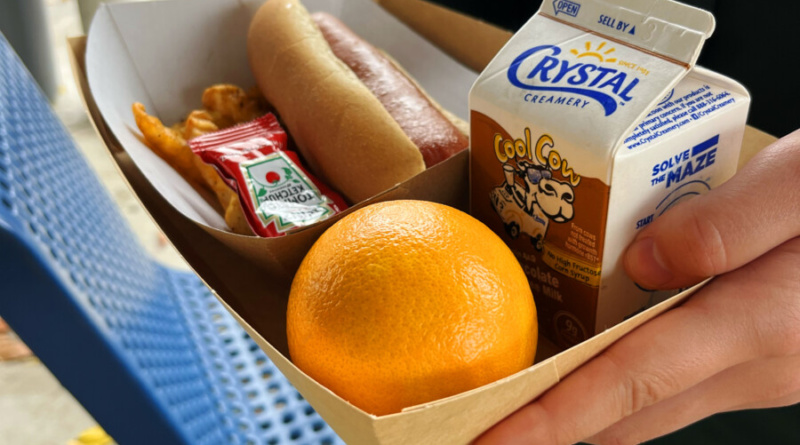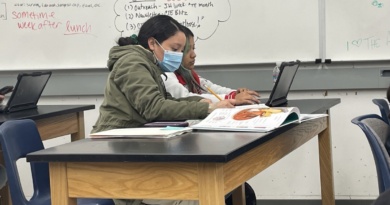Many factors contribute to fresh produce in school lunches
PHOTO: Davis High students are required to take a fruit or vegetable with every meal. The produce is often supplied by local farms in order to keep the quality fresh.
By Gwynn Canfield
BlueDevilHUB.com Staff––
The US Department of Agriculture announced a grant to the state of California in October, providing $23 million to increase the purchase of nutritious, locally-grown produce for school lunch programs.
This grant applies to Davis Joint Unified School District since it participates in the National School Lunch and Breakfast programs. This provides the ability to purchase items that are typically less affordable, including high-quality produce from local farms.
“If I go to a local farmer and want to buy fresh tomatoes, that’s wonderful, but they aren’t the least expensive tomato available on the market,” DJUSD Director of Student Nutrition Services Mark Powell said.
But the close proximity of local produce could make the higher cost worthwhile. “When I have to ship (produce) across the country, it’s losing nutritional value,” Powell said. “It’s not as nutritionally viable as (produce) that’s been picked locally within a day or two.”
More local produce could improve the quality of meals. Sophomore Taye Byun gets school lunch every day and says it is “all just junk food (and) pretty bad selections,”
“A couple more options would make it better, maybe some (better quality) food,” Byun said. “When you open the boxed salads, the iceberg lettuce is browning.”
The free lunch policy has the Davis High cafeterias serving nearly 500 meals per lunch period. Before the introduction of this policy prior to the pandemic, only about 150 meals were served each day.
This influx of students getting meals has given the district a higher rate of reimbursement, meaning more money is available to spend on school lunches. This includes local produce, something that DJUSD is taking advantage of.
“We live in the hub of one of the largest agricultural areas in the country, you have UC Davis here which is a world-renowned agricultural school,” Powell said. “For us not to be leaning that direction is silly.”
Currently, the district also gets produce from a few different local farm organizations, including Davis Farm to School. DF2S is a nonprofit organization that provides fruits and vegetables to DJUSD, supporting the district’s efforts to increase quantities of local produce in school meals.
The organization makes sure to source everything locally due to Davis being in an agricultural hotspot, according to Davis High teacher Helke Farin, who is the DF2S RISE Project Coordinator. “Quality and accessibility to good (produce) is high,” Farin said. “Why not source those things for kids who need it?”
The quality of school lunch and the produce offered within it is an ongoing process. “It could be better, however, we are making strides to make it better,” Farin said.
Junior Grace Hadani eats school lunch frequently and says, “Better produce would give students (an) opportunity to have a balanced diet,”
Improvements can be made. However, they require a lot of time, money, and patience. Grants often take over a year to fully implement into school lunch programs.
“I’m happy with what we’re putting out there, it meets all the requirements, it’s fresh, it’s local, it’s all the things that we want it to be,” Powell said. “But I want it to be better.”




